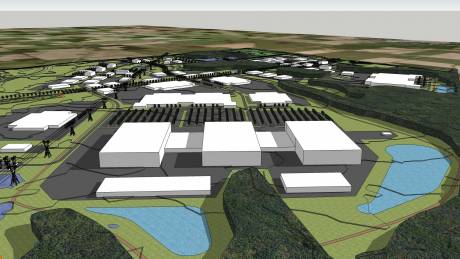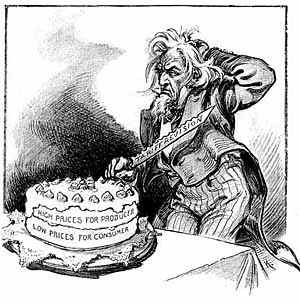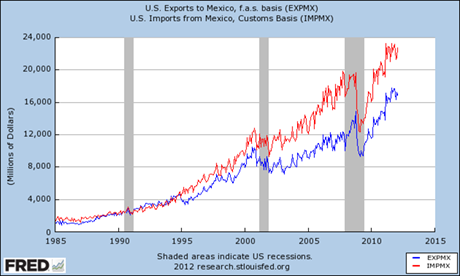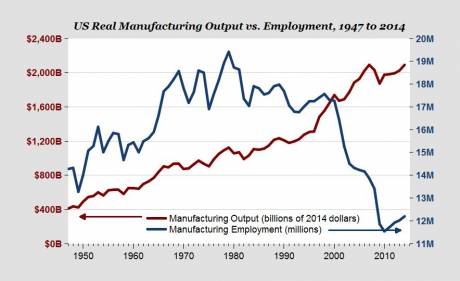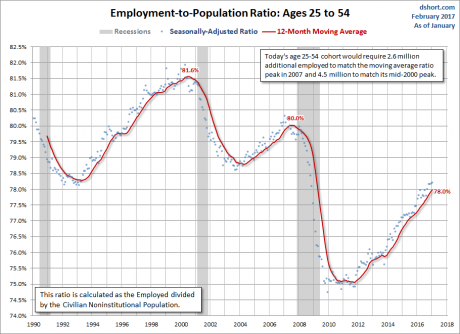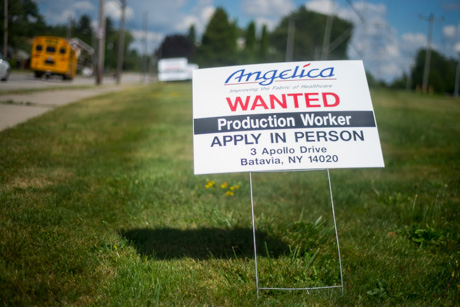New steel tariffs could tighten profits for local manufacturers, but job losses not expected
Tariffs on steel and aluminum announced by the Trump Administration last week could put a squeeze on profits for local manufacturers, according to the executives at Graham Corp., Chapin Industries, and Liberty Pumps.
"Yes, we are adversely impacted by higher costs from imported carbon steel and stainless steel," said Jeff Glajch, chief financial officer for Graham. "We are also seeing significant increases in costs from our domestic suppliers. Making the situation more challenging is that our foreign competitors are not impacted, and if they import finished product, it is not affected by the tariffs."
While details of the tariff plan have not been released, the administration has said it plans to impose in just a few days a 25-percent tariff on steel and 10-percent tariff on aluminum. This would be a tax on all steel and aluminum imported into the United States from other countries.
The tariff was announced under rules that allow a nation to impose a tariff for national security purposes in order to protect an industry considered vital to a nation's defense.
Even though the tariffs have not taken effect yet, manufacturers around the country are reporting that prices on steel and aluminum have been rising and are getting a bump by the anticipated tariff and are expected to rise further. Those price increases get passed on to consumers or profits must be cut.
"In steel, we use many many tons," said Jim Campell, CEO of Chapin. "Over the last 12 month, steel prices have already increased significantly. We have absorbed and offset these cost, however, we have not raised prices to our customers.
"If and when steel manufacturers raise prices again, it will impact our bottom line," Campell added. "Depending on the amount of the increase, we may be forced to raise prices, which in the end will truncate our sales and hurt our bottom line. As you know tariffs are a two-edge sword, helps some, hurts others (mostly the consumer)."
At Liberty Pumps, price increases so far have not had a big impact.
"I just had a conversation yesterday with Purchasing," said CEO Charlie Cook. "Yes, prices are going up. It has been widespread but so far just moderate percentages. When blended into the total cost of products including overheads, etc., it’s not something we’re going to react to yet. We really can’t anyway since we just imposed a price increase in January.
"Have to say," he added, "it will be good to see some U.S. furnaces cooking again."
The tariffs, however, come at a time when the steel industry in the United States is healthy. The sector is coming off of 22 consecutive profitable quarters, according to the latest report from the Department of Commerce (pdf), with net income (profits) of $869 million in the final quarter of 2017.
In the final month of 2017, domestic steel production increased by more than 2 percent, from 6.6 million metric tons in November to 6.8 million metric tons in December while prices went up 6.7 percent.
The tariffs are ostensibly aimed at China, which has become the world's largest steel producer, producing more steel than the United States, Mexico, Canada, the EU, and Russia combined, but China accounts for only 2 percent of the steel used in the United States. Seventeen percent of imported steel comes from Canada, 14 percent from Brazil, 10 percent from South Korea, and 9 percent from Mexico.
Even with all those imports, U.S. producers still control 70 percent of the domestic market, according to Scott Lincicome, an international trade attorney associated with the Cato Institute.
Many economists are predicting higher prices for consumers as a result of the tariffs. When President Barack Obama imposed a tariff on tire imports from China, it may have saved 1,700 U.S. jobs but at a cost to U.S. consumers of $900,000 per job saved.
Many economists have predicted that the new tariffs will unleash a trade war, but since the tariffs are being implemented under national security rules, the United States can make exceptions for countries considered allies. These include its foremost trading partners, allowing trade negotiators to zero in on China, leading Harvard economist Martin Feldstein to speculate that the real target of the tariffs is China's continued insistence on obtaining U.S. technology from companies trying to do business there. The tariffs, Feldstein speculates, could be used as leverage in trade negotiations over the issue.
The situation for aluminum is very different than steel for the United States, which imports 90 percent of its aluminum used in everything from beer cans to jet fighters, and imports are rising, according to The Washington Post. That said, higher prices for aluminum will mean higher prices for beer and soda pop.
None of the Genesee County companies anticipating higher prices on steel and lower profits anticipate layoffs as a result of the changing financial picture, even though some economists have predicted from 140,000 to 170,000 jobs lost across the country as a result of the tariffs.
Campell at Chapin said there will be no local layoffs.
"We have not had a production layoff in the last decade," Campbell said. "We go to great lengths to keep our workforce intact. It may, however, slow some of our growth."
Glajch, at Graham, said even with the increased production costs, the business is growing.
"We are not anticipating layoffs," Glajch said. "On the contrary, we are hiring. Our core markets have shown early signs of some improvement and our Navy business is doing quite well. We are hiring for direct labor and certain engineering and sales roles."

